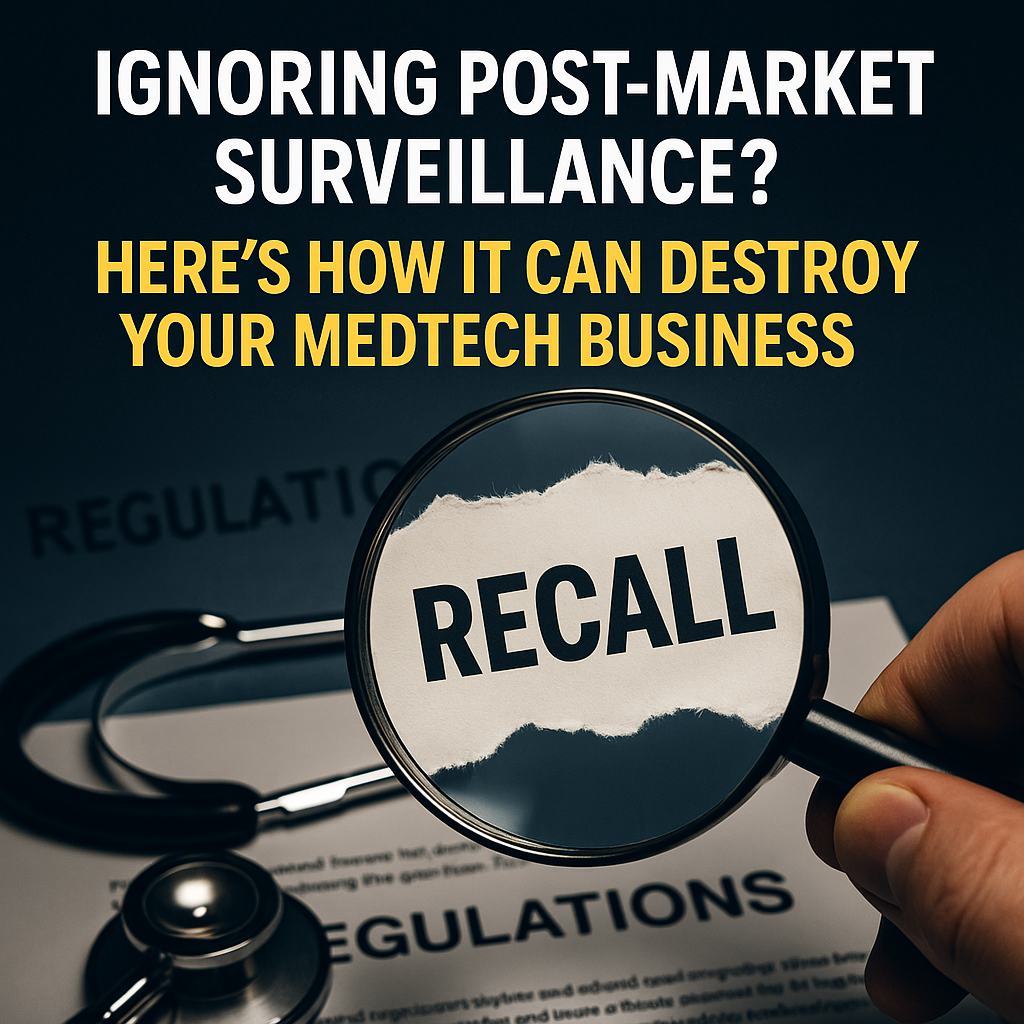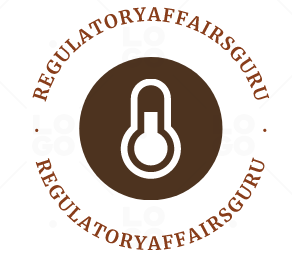Introduction: Why PMS Matters

Post-market surveillance (PMS) is your systematic means of monitoring the safety and performance of your medical device in real-world use post-market launch.
Why it matters:
✅ Devices don’t work the same in the real world: Variations between patient cohorts, user settings, misuse, or unforeseen circumstances may lead to malfunctions or adverse effects.
✅ Finds long-term or rare risks: Some issues only arise after several years of usage or under circumstances not simulated by pre-market testing.
✅ Facilitating continual improvement: PMS data can lead to design, labeling, or process modifications, improving product quality and competitiveness.
✅ Regulation requirement: FDA, EU MDR, and foreign export markets require producers to report post-market surveillance regularly to confirm public health.
✅ Legal and financial protection: Early indications of issues avert costly recalls, legal suits, or loss of reputation.
Without proper PMS:
❌ You tend to miss early indicators of trouble, and failures will be in significant numbers.
❌ Regulators issue warning letters or recalls.
❌ Distributors and hospitals lose faith in your firm.
❌ Patients face unnecessary harm.
???? Regulatory Framework: FDA vs. EU MDR
United States (FDA)
FDA’s approach towards PMS is:
✅ Medical Device Reporting (MDR, 21 CFR Part 803): Requires device manufacturers to report deaths caused by devices, serious injury caused by devices, and specific malfunctions within certain periods.
✅ Quality System Regulation (21 CFR Part 820): Efficient handling of complaints, CAPA, and internal feedback processes is crucial to monitor post-market complaints in a systemized fashion.
✅ 522 Postmarket Surveillance Studies: The FDA can require necessary additional post-market data collection for specific devices with known or suspected risk.
✅ Post-Approval Studies (PAS): For safety and performance surveillance post-approval.
Important note: Even though the FDA doesn’t officially employ “PMS,” its infrastructure necessitates systematic post-market data collection, analysis, and action.
European Union (EU MDR)
EU MDR Articles 83–86 specifically mandate PMS:
✅ A PMS Plan (Annex III): Specifies your data collection, analysis, and action process.
✅ PMS Reports (Class I devices): Occasional reports of the PMS results and corrective actions.
✅ PSUR (Periodic Safety Update Report) for Class IIa, IIb, III: Needs:
Summary of PMS results.
Update benefit-risk assessments.
Sales/usage data and remedial actions.
In addition:
✅ PMS results should help:
Clinical Evaluation Reports (CERs).
Risk management updates (as per ISO 14971).
Labeling and Instructions for Use (IFU) updates.
???? PMS Objectives
1️⃣ Confirm Safety and Performance under Real-Life Use
Devices may act differently in the real world outside of controlled clinical trials due to:
✅ User variability (clinicians, patients, caregivers).
✅ Environmental conditions (temperature, humidity, handling).
✅ Comorbidities in patients not found in pre-market studies.
PMS guarantees your device remains safe and functions as intended under these conditions.
2️⃣ Locate New or Unanticipated Risks
No pre-market testing can be conducted for every situation; PMS finds:
✅ Rare adverse events.
✅ Misuse patterns leading to safety issues.
✅ Unanticipated device interaction with other devices.
Example: A wearable device inducing skin irritation because of hot weather revealed by PMS reports.
3️⃣ Monitor Known Hazards
PMS guarantees:
✅ Stability of frequency and magnitude of known hazards with your hazard analyses.
✅ When trends change (e.g., growing complaints concerning a specific failure mode), repairs are done.
4️⃣ Find Improvement Opportunities
Data from PMS reveals:
✅ Usability defects that require design changes.
✅ Label improvements to be more understandable.
✅ Firmware/software patches to enhance reliability.
5️⃣ Regulatory Compliance and Market Availability
✅ The FDA and EU MDR require systematic post-market monitoring.
???? Hospitals notified bodies and distributors that they need evidence of continuous monitoring to stay associated.
Step-by-Step Guide: Creating Your PMS System
1️⃣ Create a PMS Plan
What is it?
A written report showing you how you will collect, analyze, and act on post-market data for your device with ongoing monitoring.
Key Elements:
The device provides information about its description, intended use, and risk class.
Sources of data:
Complaints and MDR/vigilance reports.
PMCF data, clinical studies, and registry data.
Literature and competitor recalls.
User feedback and field input.
✅ For:
Data collection (who, how, where data are taken).
Data analysis and trend tracking.
Action trigger threshold definition (CAPAs, design changes, regulatory notices).
✅ Roles and responsibilities:
Who is accountable for PMS in your company?
Who collects and analyzes data, triggers action, and reports outcomes?
✅ PMS Report and PSUR development timelines.
Practical Guidance:
Create your PMS plan alongside your design effort to be launch-ready.
Please put it in your QMS under document control so it is easy to update.
2️⃣ Develop Data Collection Procedures
Why:
Systematic collection enables you to capture relevant data at regular intervals, not just when issues are severe.
Data Sources:
✅ Customer complaints and product returns.
✅ Adverse event reports from the user or distributor.
✅ Service and maintenance records (masked failures found during servicing).
✅ PMCF surveys and follow-up data.
✅ Public databases (FDA MAUDE, EUDAMED).
✅ Search the literature for emerging threats with similar devices.
Implementation Tips
✅ Use CRM/eQMS integrated intake forms for complaints and service reports.
✅ Train support and service staff to spot and refer potential safety indicators.
✅ Document each data point with the date, device identifiers, and information.
3️⃣ Act Proactively on Data
Why:
You need to see patterns, trends, and outliers beforehand, not simply react to single complaints.
How
✅ Trend analysis: Track complaint and adverse event rates over time.
✅ Stratify by:
Lot/batch numbers.
Geography/market.
Determine the type of user, whether it’s a clinician or a patient.
✅ Use control charts and dashboards to signal spikes.
✅ Cross-reference against your risk management file for acceptability thresholds for risks.
Example:
Trend analysis detects a spike in Bluetooth disconnects in one of your firmware releases, prompting investigation and corrective action.
4️⃣ Integrate PMS Findings with Risk Management and CAPA
✅ Update your ISO 14971 risk management document when:
New risks are identified.
Increase the frequency orseverity of a known risk.
Existing controls are not sufficient.
✅ Leave CAPAs open for:
System-wide issues that must be investigated and corrected.
Changes in process or design are necessary due to recurring problems.
✅ Keep applicable results into:
Update the Instructions for Use (IFU) and labeling to include additional precautions.
Updates for user training are also necessary.
5️⃣ Comply with Regulatory Reporting Requirements
FDA Requirements:
✅ File MDRs:
The 30-day period applies to deaths, severe injuries, and malfunctions.
5-day report for specific critical issues.
✅ Report data under a 522 Order by FDA schedules.
✅ Report PAS updates for PMA devices as required.
EU MDR Requirements
✅ PMS Report (Class I devices): Reports on PMS activities and conclusions.
✅ PSUR (Class IIa, IIb, III devices):
The Class IIb/III devices require an annual submission.
Biennial for Class IIa.
Include the benefit-risk analysis and sales/usage data.
✅ Ensure that it is included in your Clinical Evaluation Report (CER) and risk documentation.
6️⃣ Management Review and Oversight
Track PMS outcomes in your QMS management reviews to:
✅ Update senior management with trends and concerns.
✅ Facilitate resource allocation for action needed.
✅ Verify the performance of your PMS processes.
Auditing will require documentation of the reviews conducted.
7️⃣ Update Technical Documentation and Processes
Within the context of PMS outcomes:
✅ Review your record of risk management with additional information.
✅ Update Clinical Evaluation Reports (EU MDR) if new evidence affects benefit-risk assessment.
✅ Correct IFUs or labeling if additional warning or explanation is necessary.
✅ Record revisions to show noticeable improvement over time.
⚠️ Do Not Make the Following Mistakes
❌ Constraining PMS to a reactive complaint-only function.
❌ Failing to analyze cumulative data, losing trend identification.
❌ Late MDR or vigilance reporting.
❌ Failure to update risk management or design files after PMS results.
❌ Inadequate documentation and record keeping.
❌ Treating PMS as a checkbox exercise rather than an improvement tool for quality.
Tips on How to Have a Good PMS System
✅ Actively plan your PMS system before launch.
✅ Employ formalized electronic trend monitoring and data collection systems.
✅ Set forth clear-cut escalation thresholds.
✅ Train your teams to notice and report PMS data.
✅ Seamless integration of PMS in CAPA and risk management.
✅ Continuous record of analysis, decision, and action taken.
✅ Review PMS effectiveness during management reviews.
✅ Use PMS data for continuous product improvement.
Real-World Example
Situation: A Class II wearable product company experienced a slight but steady increase in skin irritation complaints under PMS monitoring.
✔ Led this trend by complaint statistics categorized by geography and climate.
✔ Root cause analysis showed adhesive defects caused and exacerbated by humidity and perspiration.
✔ Company:
I opened a CAPA for an official investigation.
Resimplified the adhesive.
Added skin preparation words to the IFU.
I have trained the support staff to handle complaints effectively.
Results
There was an 80% decrease in related complaints within 3 months.
This has led to an increase in customer and distributor confidence.
Improved preparation for QMS audits is also observed.
Benefits of having a good PMS System
✅ Maintains patient safety and prevents harm.
✅ Builds a high-quality, inspection-capable QMS.
✅ Enables proactive process and design improvements.
✅ Reduces regulatory risk and recalls.
✅ Builds regulator, distributor, and hospital relationships.
✅ Improves product performance and market confidence.
📚 References
✅ 1️⃣ FDA Postmarket Requirements
https://www.fda.gov/medical-devices/postmarket-requirements-devices
✅ 2️⃣ 21 CFR Part 803 – Medical Device Reporting
https://www.ecfr.gov/current/title-21/chapter-I/subchapter-H/part-803
✅ 3️⃣ 21 CFR Part 820 – Quality System Regulation (QSR)
https://www.ecfr.gov/current/title-21/chapter-I/subchapter-H/part-820
✅ 4️⃣ EU MDR – Official Text (PMS Articles 83–86)
EU MDR Articles can be accessed via the European Commission’s official EUR-Lex:
https://eur-lex.europa.eu/eli/reg/2017/745/oj
Alternatively, Article-specific text for PMS:
- Article 83 – Post-market surveillance system of the manufacturer
- Article 84 – Post-market surveillance plan
- Article 85 – PMS report
- Article 86 – PSUR
✅ 5️⃣ ISO 13485:2016 – Medical devices – QMS Requirements
ISO standards are protected by copyright and require purchase. For official access:
- ISO page: https://www.iso.org/standard/59752.html
Alternatively, a summary and structure view is available:
✅ 6️⃣ ISO 14971:2019 – Medical devices – Application of risk management
Official standard purchase and structure overview:
- ISO page: https://www.iso.org/standard/72704.html
Detailed summaries and guidance for implementation:
✅ 7️⃣ FDA 522 Postmarket Surveillance
https://www.fda.gov/medical-devices/postmarket-requirements-devices/postmarket-surveillance-under-section-522
